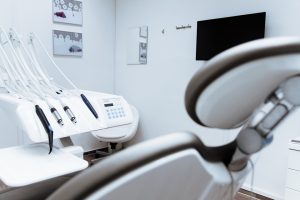

The dental assisting profession in the United States is regulated by different bodies in each state.
What responsibilities, requirements, and licenses will be required by dental assistants depend on a state’s Dental Practice Act.
You should know that they may vary significantly and you need to get familiar with the ones in your state.
The American Association of Dental Assistants (AADA) is doing its best to establishing standardized credentialing and education for dental assistants in the United States but has not managed to accomplish this goal yet.
Sponsored ListingsAccording to the Dental Assisting National Board (DANB), there are 70 dental assisting functions that dental assistants can perform under a dentist’s supervision.
Those include both clinical and administrative duties, and the majority of them are standard responsibilities across the board.
However, there is a number of these duties which are considered expanded functions by many states.
The state’s Board of Dental Examiners, through their Dental Practice Act, determines which of these 70 responsibilities require additional registration, training, or certification, and which dental assistant responsibilities are prohibited.
In the majority of states, it is required that dental assistants are certified, licensed, or registered so as to be allowed to practice their duties.
Dental assistants in those states may have various levels of registration, depending on the responsibilities and duties they are authorized to perform.
Here we will mention some of the possible job duties of dental assistants that may be regulated in the state where these professionals work:
Dental assistants in 15 states are required to have some form of training.
Also, just a few states, including Minnesota, California, and Michigan, have determined specific educational standards and examinations for registered dental assistants.
All the other states still do not require specific training, credentialing, or continued education qualifications for dental assistants.
The first step in your dental assistant career is to reach education which will lead to an entry-level job,
These entry-level dental assistants have specific titles in various states, so in California, the title is “unlicensed dental assistant,” while in Iowa it is “dental assistant trainees.”
In those states where entry-level dental assistants are recognized, they have to go through probationary time periods prior to being allowed to apply for a license/registration or begin performing expanded functions.
However, there are states such as North Carolina that have no requirements at all and they allow dental assistants to perform dental procedures without completing specific training requirements.
The AADA emphasizes that all dental professionals must understand the guidelines and regulations related to:
Basic requirements for beginning dental assistants in various states include:
According to their duties and responsibilities, dental assistants are recognized at various levels and their titles may vary.
This means that dental assistants are allowed to achieve the required training with the aim to advance to the next level.
The requirements vary by the state, so in Texas, a dental assistant is allowed to perform basic supportive dental procedures under the direct supervision of a licensed dentist, and he/she does not need to possess any specific education or training requirements.
Nevertheless, if he/she wishes to become a Registered Dental Assistant (RDA), he/she must complete a course in basic life support and one of the following:
Another example of a state, which determines its own requirements for dental assistants, is New York State.
It recognizes three dental assistant levels:
Just like with any other qualification, some states have radiology requirements for dental assistants who operate dental x-ray equipment and perform dental radiographic procedures, and an example of this is Florida.
In Florida, so as to be able to perform radiographic functions, you must be a graduate of Florida Board of Dentistry-approved dental assisting programs or be state-certified as dental radiographers through the Florida Department of Health (FDOH).
So as to be eligible for the certification from the FDOH, dental assistants must have completed at least three months of on-the-job training under the direct supervision of a Florida licensed dentist and must have completed a Florida Board-approved radiology course.
On the other hand, New York State and Alaska, have no radiography requirements for dental assistants.
If you are in need of additional information related to dental assistant state requirements you can obtain them through the following organizations:

Choosing a career as a dental assistant places you in one of the top 25 medical support careers. This key…

One of the reasons why people choose a career in dental assisting is that it can provide a good income….

Due to the fact that a dental assisting career offers flexibility, there is an increasing number of people who decided…
With the demands of everyday life, it can be quite challenging to pursue a qualification at a tertiary institution. Simply…